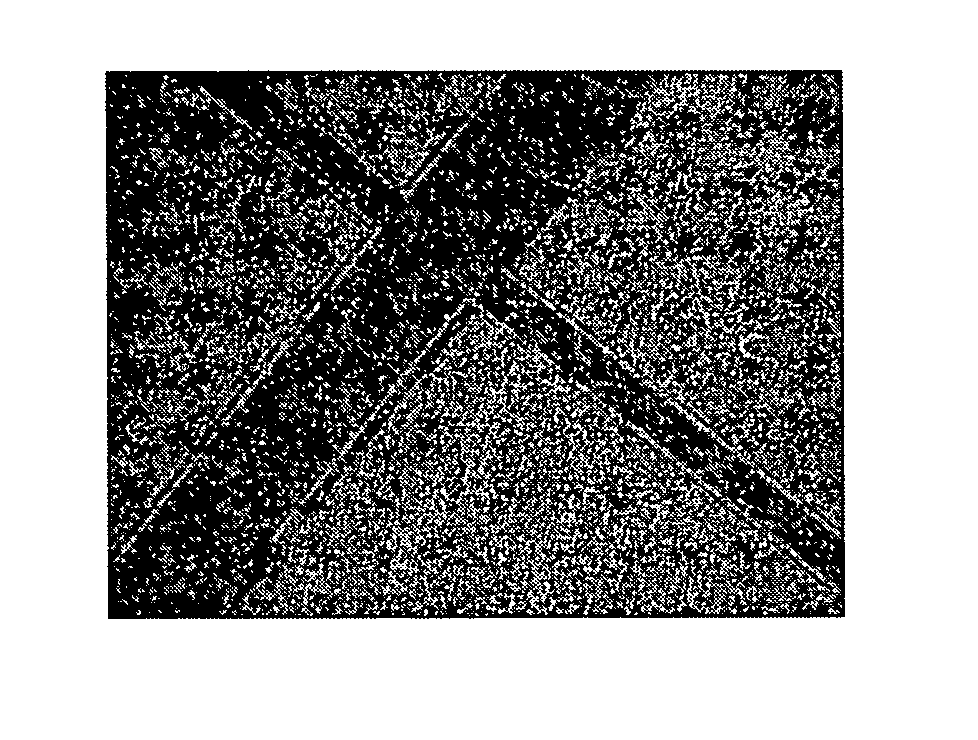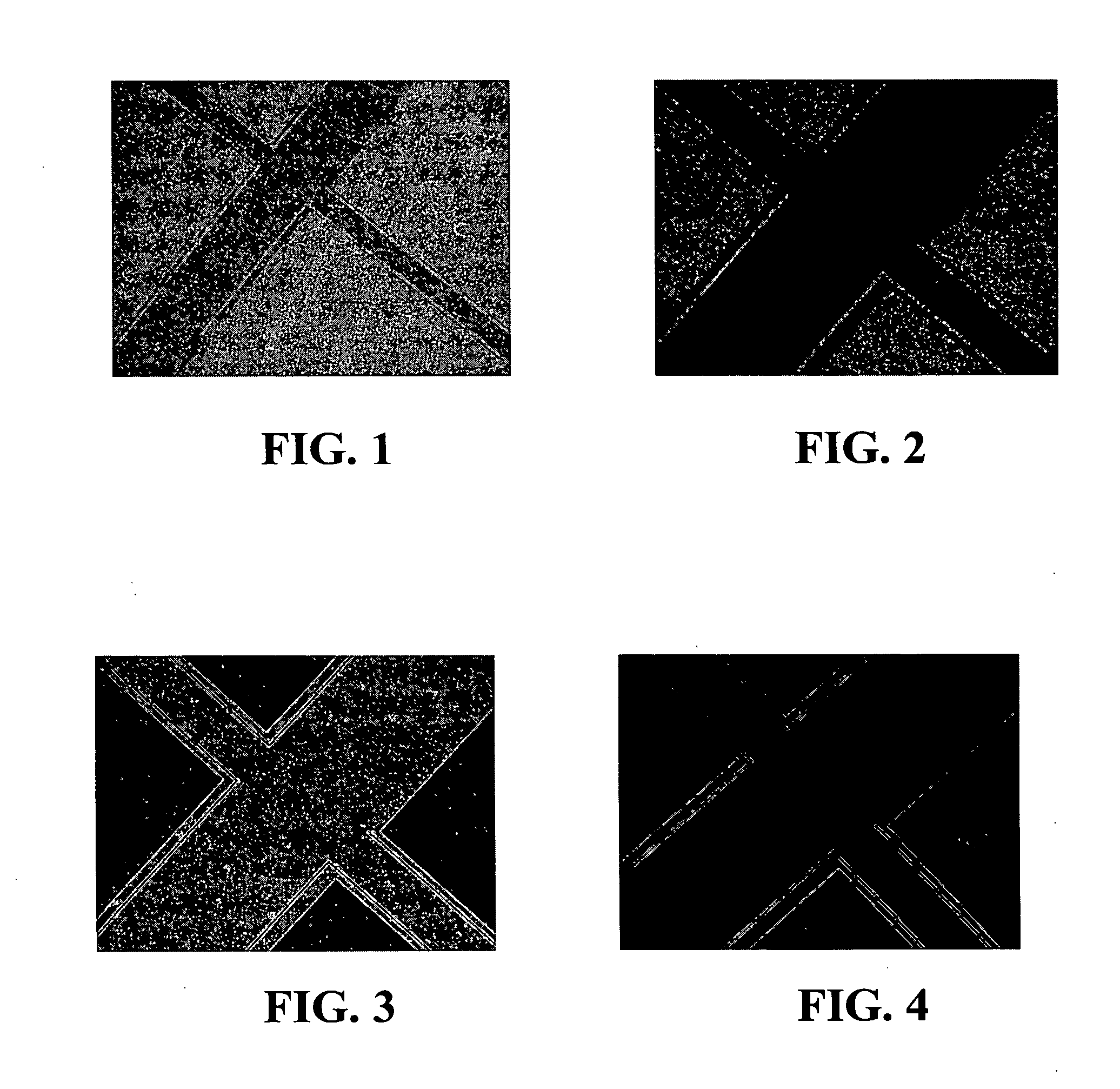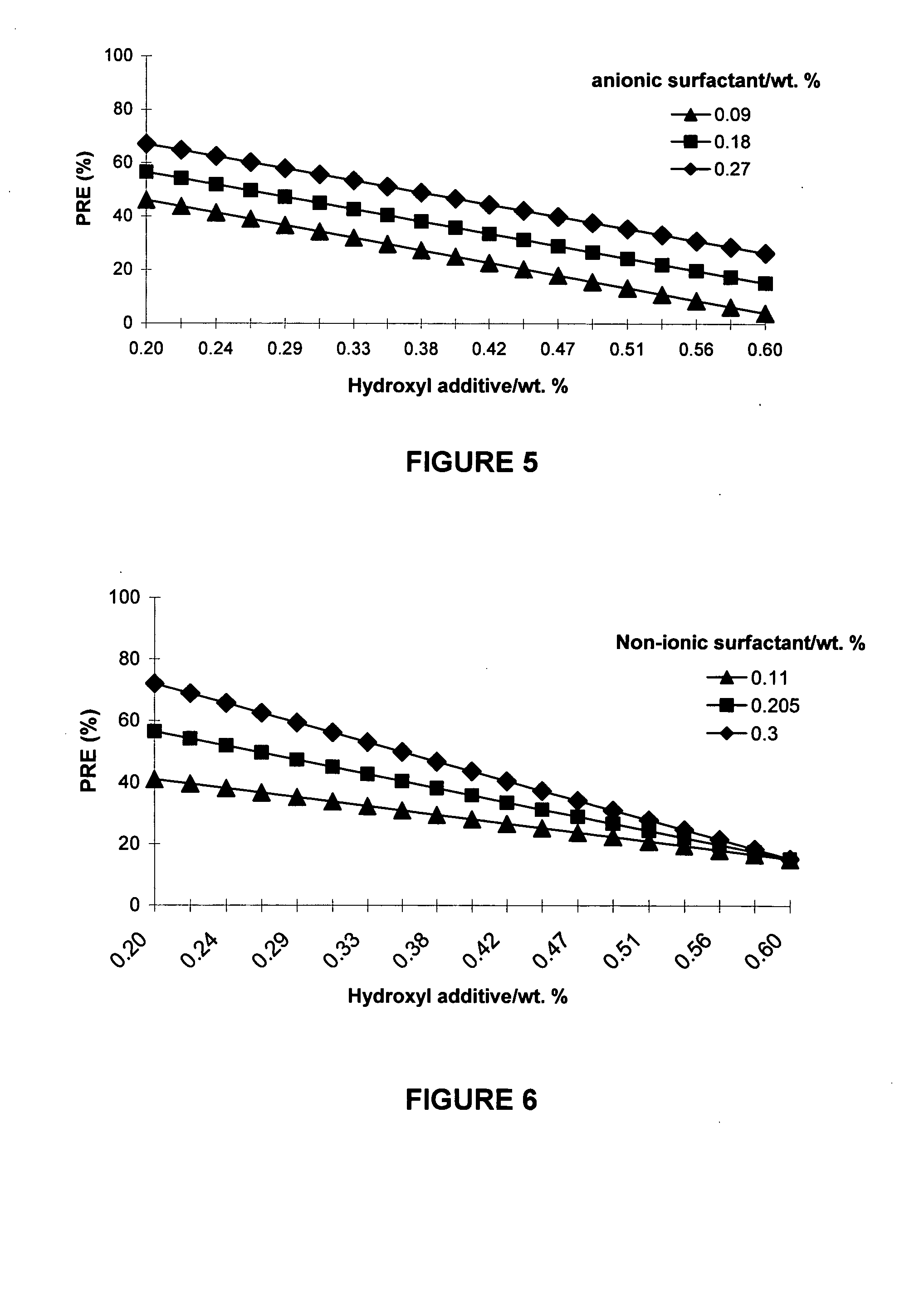Removal of particle contamination on a patterned silicon/silicon dioxide using dense fluid/chemical formulations
a technology of patterned silicon and silicon dioxide, which is applied in the preparation of detergent mixture compositions, fluorine-based surface-active compounds, detergent compounding agents, etc., can solve the problems of not all surfaces to be cleaned are smooth, and complicating the cleaning process
- Summary
- Abstract
- Description
- Claims
- Application Information
AI Technical Summary
Benefits of technology
Problems solved by technology
Method used
Image
Examples
example 1
[0077] The sample wafers examined in this study included silicon nitride particles residing on a patterned silicon dioxide layer and silicon layer. The samples were first processed using pure SCCO2 at 50° C. and 4400 psi, and although the velocity of the flowrate (10 mL / min) removed some of the particles, it was ineffective at completely removing all of the contaminate particles.
[0078]FIG. 1 is an optical microscope photograph of this wafer comprising a patterned silicon dioxide layer and silicon layer, showing contaminant particles of SiN thereon, subsequent to cleaning thereof with SCCO2 / methanol solution.
[0079] Various chemical additives / surfactants then were added to the SCCO2 / methanol solution and their particle removal efficiency was examined.
[0080]FIG. 2 shows the optical image of the wafer cleaned with a SCCO2 / methanol / boric acid / NH4F solution at 50° C. and clearly shows that the SiN particles are removed from the SiO2 surface, however, this cleaning solution was not effe...
example 2
[0085] The sample wafers examined in this study included silicon or silicon oxide wafers having silicon nitride particle matter thereon. The processing conditions included temperature of 70° C., pressure around 3000 psi and a process time in the range of 2 to 30 minutes, preferably in the range of 5 to 10 minutes. The process flow used may be either a static soak or a dynamic flow. The cleaning composition included SCCO2, about 5 wt. % to about 15 wt. % methanol, boric acid as the hydroxyl additive, about 0.8 wt. % ammonium fluoride as the etchant, non-ionic surfactant and anionic surfactant.
[0086]FIG. 5 illustrates the particle removal efficiency (PRE) for the removal of silicon nitride particles from a silicon surface using a cleaning composition including 0.205 wt. % non-ionic surfactant and varying concentrations of hydroxyl additive and anionic surfactant. It can be seen that both the anionic surfactant and the hydroxyl additive have an effect on the PRE, whereby the lower the...
example 3
[0092] Using the optimized cleaning composition of Example 2, patterned silicon / silicon oxide wafers having silicon nitride particle matter thereon were cleaned to determine the effects of temperature and pressure on the PRE, keeping all other variables constant. The cleaning composition included SCCO2, about 5 wt. % to about 15 wt. % methanol, a low concentration of boric acid as the hydroxyl additive, about 0.8 wt. % ammonium fluoride as the etchant, a high concentration of non-ionic surfactant and a high concentration of anionic surfactant.
[0093]FIG. 11 illustrates the particle removal efficiency (PRE) for the removal of silicon nitride particles from the patterned silicon / silicon oxide surface, as well as the etch rate of the silicon / silicon oxide surface, using the SCCO2 cleaning composition at a constant pressure of 2800 psi. It can be seen that as the temperature of the composition is increased, both the PRE and the etch rate of the silicon and silicon oxide surfaces increas...
PUM
| Property | Measurement | Unit |
|---|---|---|
| pressure | aaaaa | aaaaa |
| temperatures | aaaaa | aaaaa |
| pressure | aaaaa | aaaaa |
Abstract
Description
Claims
Application Information
 Login to View More
Login to View More - R&D
- Intellectual Property
- Life Sciences
- Materials
- Tech Scout
- Unparalleled Data Quality
- Higher Quality Content
- 60% Fewer Hallucinations
Browse by: Latest US Patents, China's latest patents, Technical Efficacy Thesaurus, Application Domain, Technology Topic, Popular Technical Reports.
© 2025 PatSnap. All rights reserved.Legal|Privacy policy|Modern Slavery Act Transparency Statement|Sitemap|About US| Contact US: help@patsnap.com



